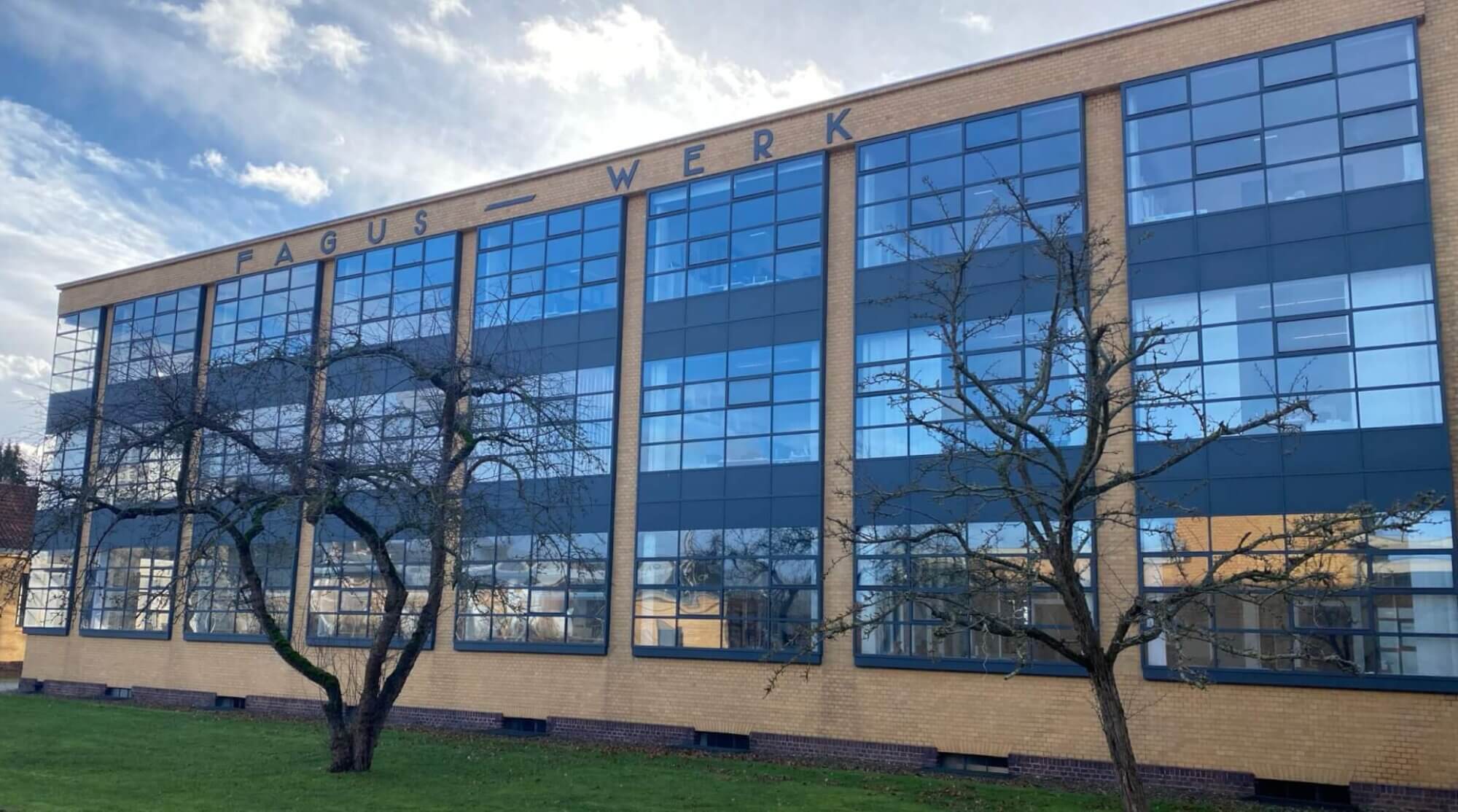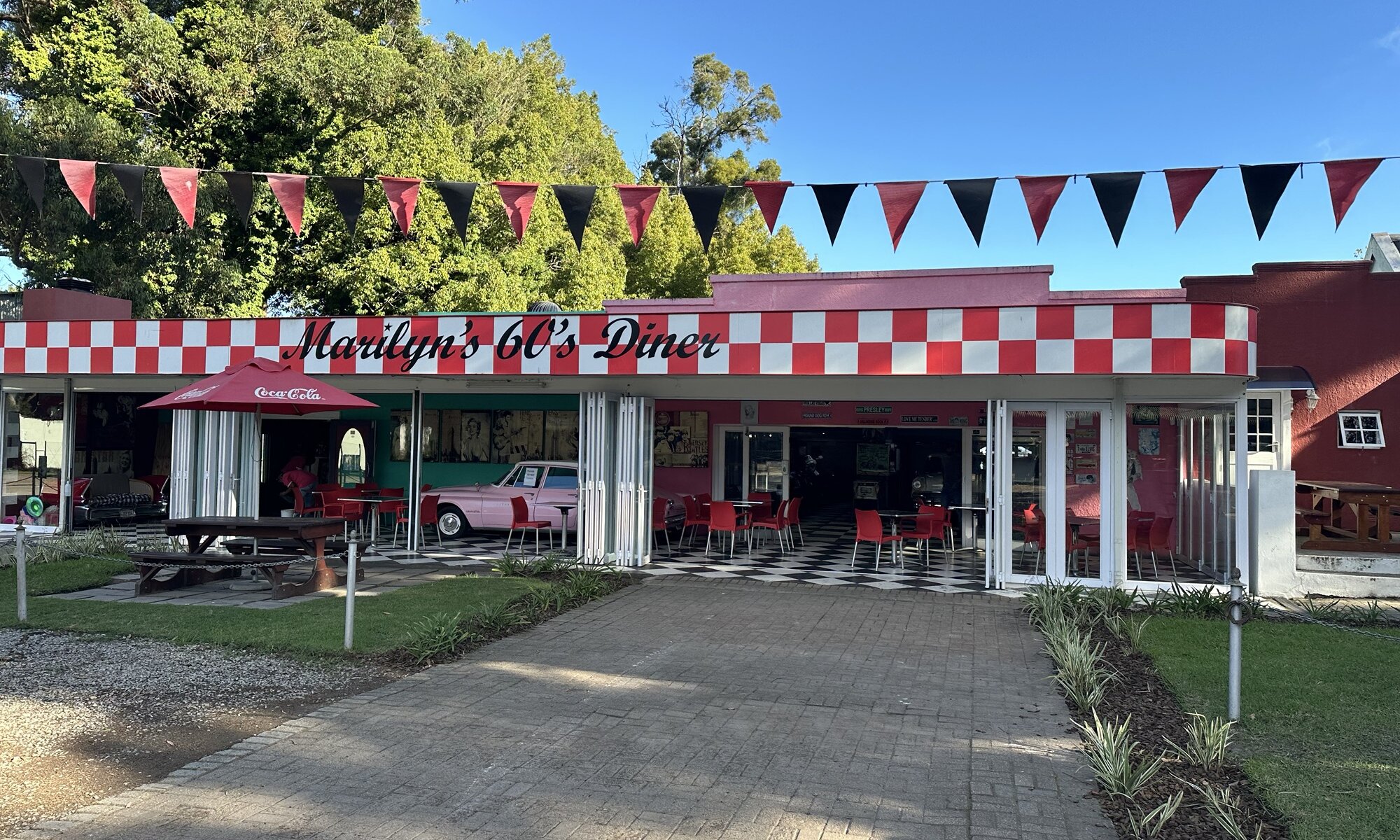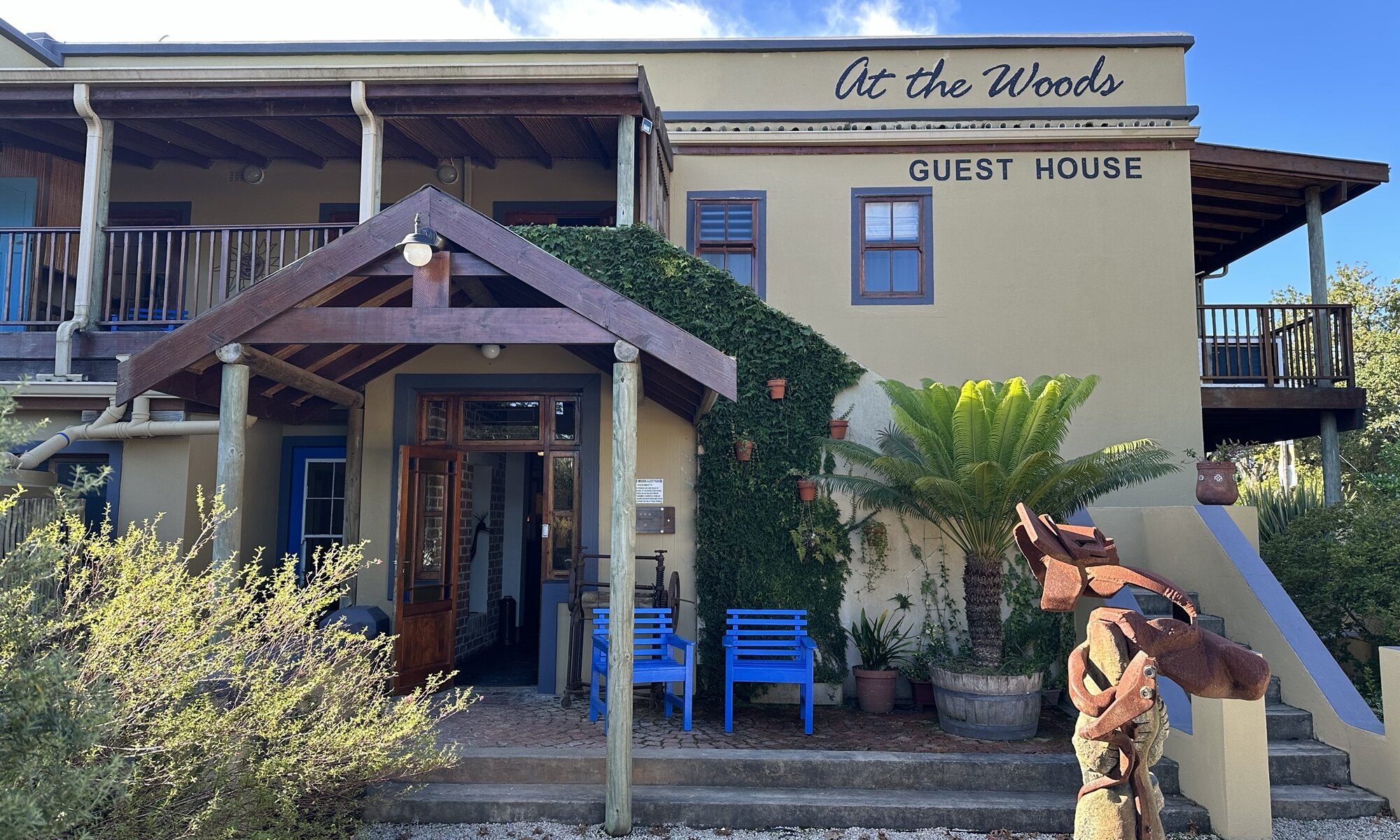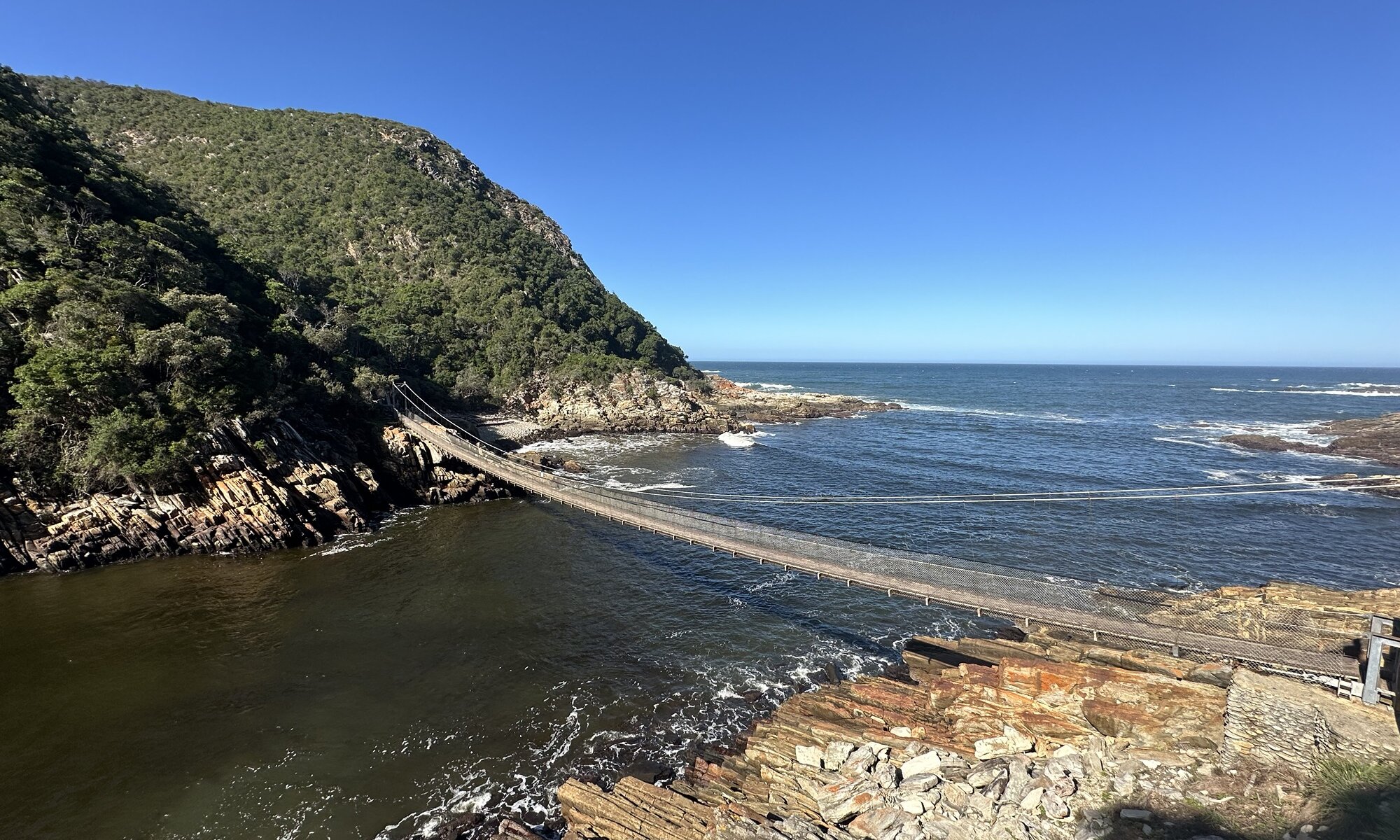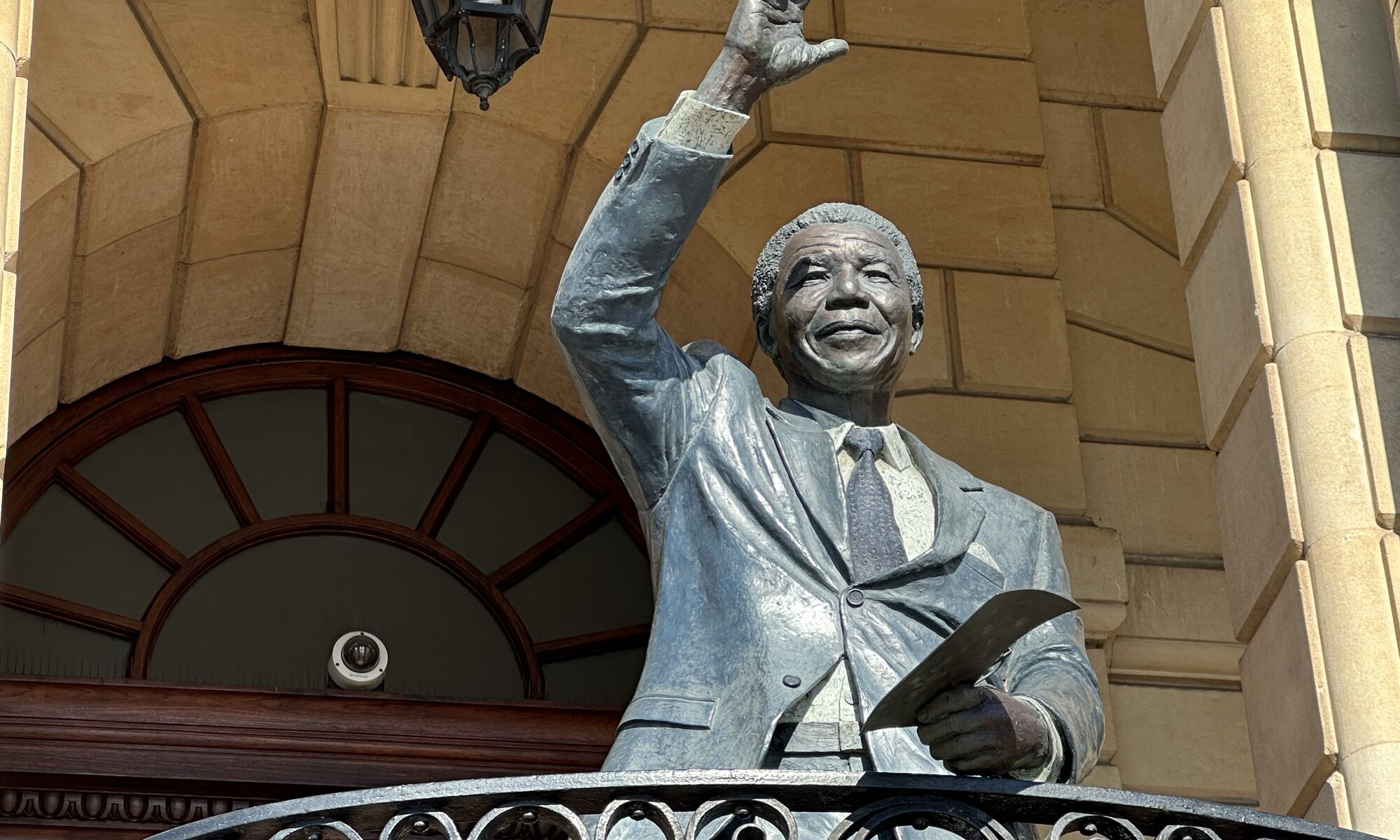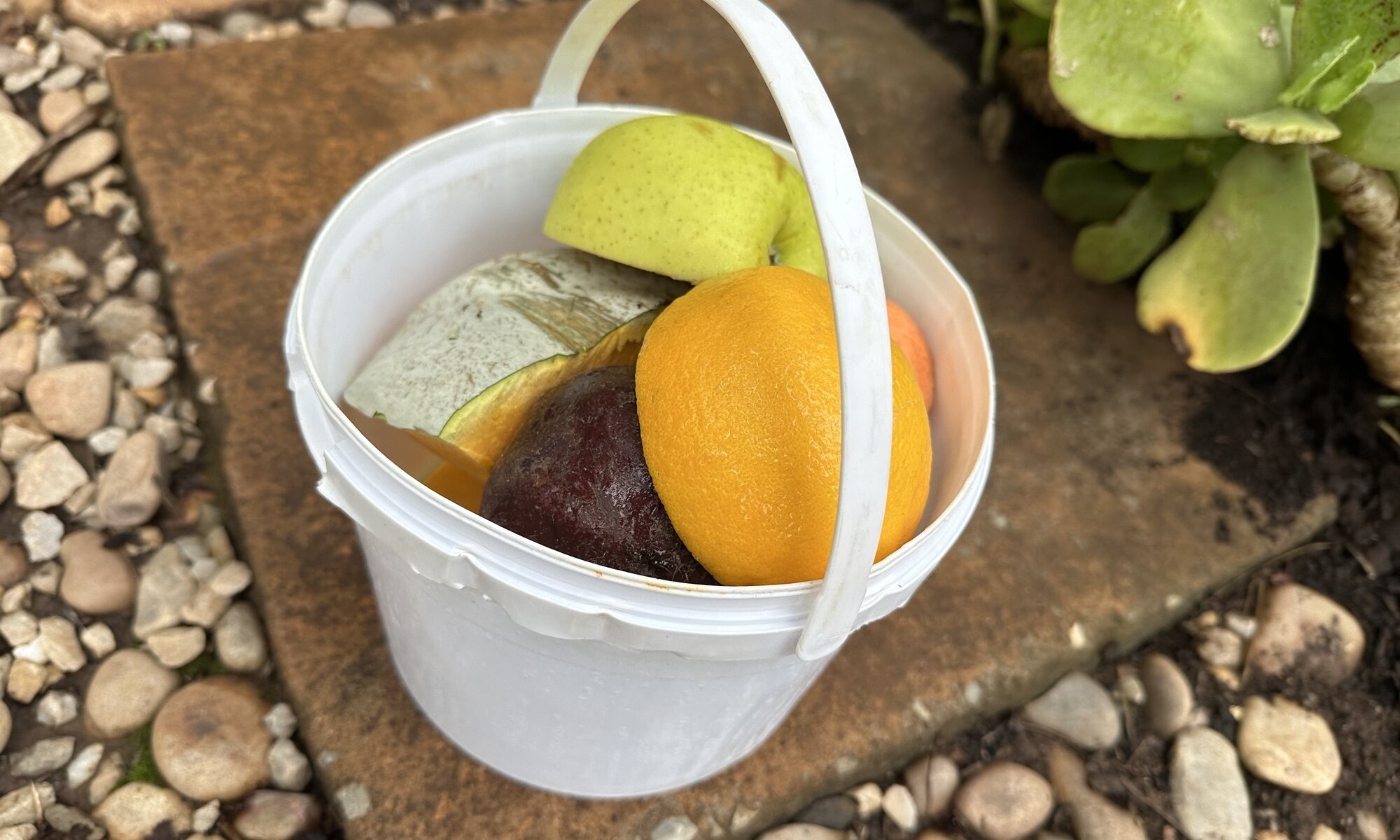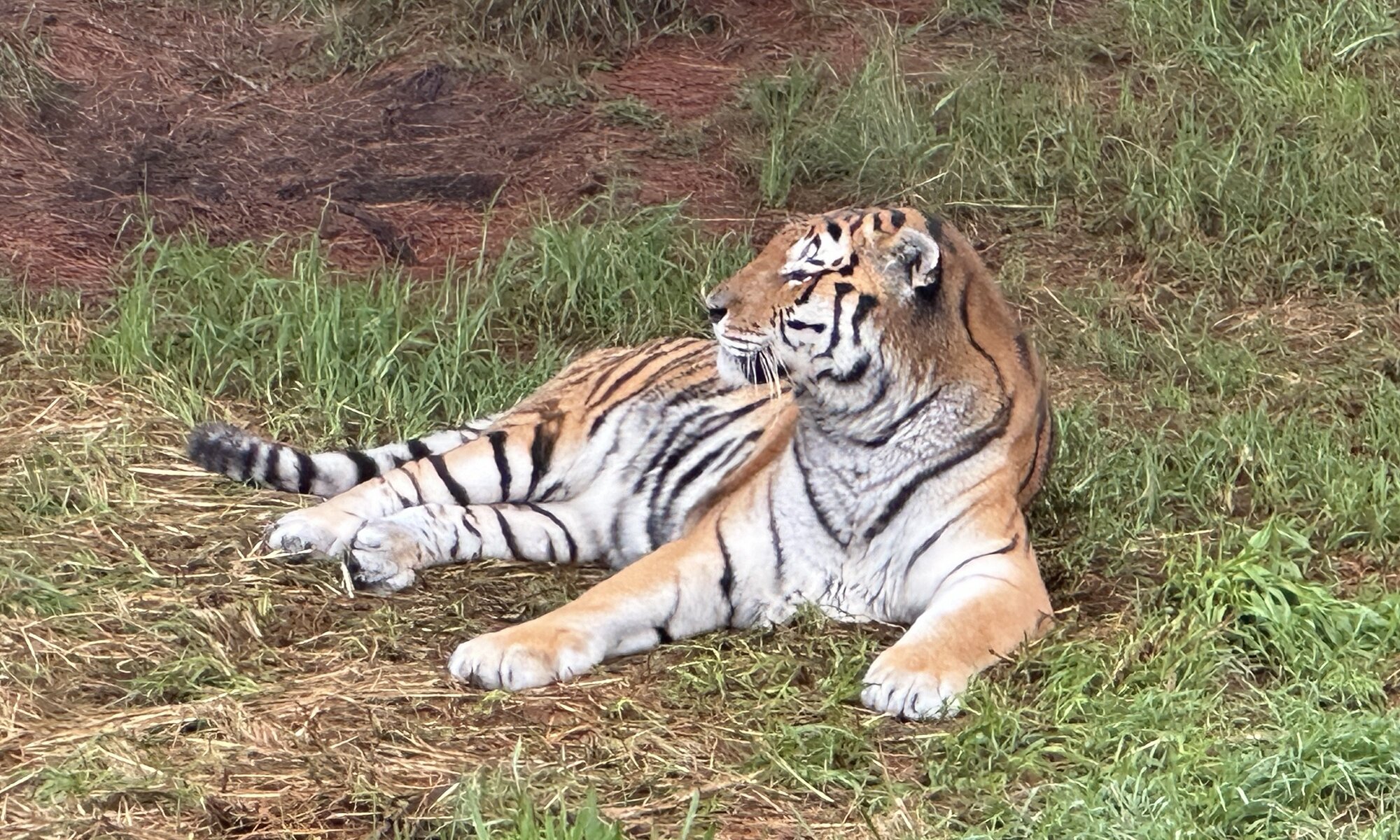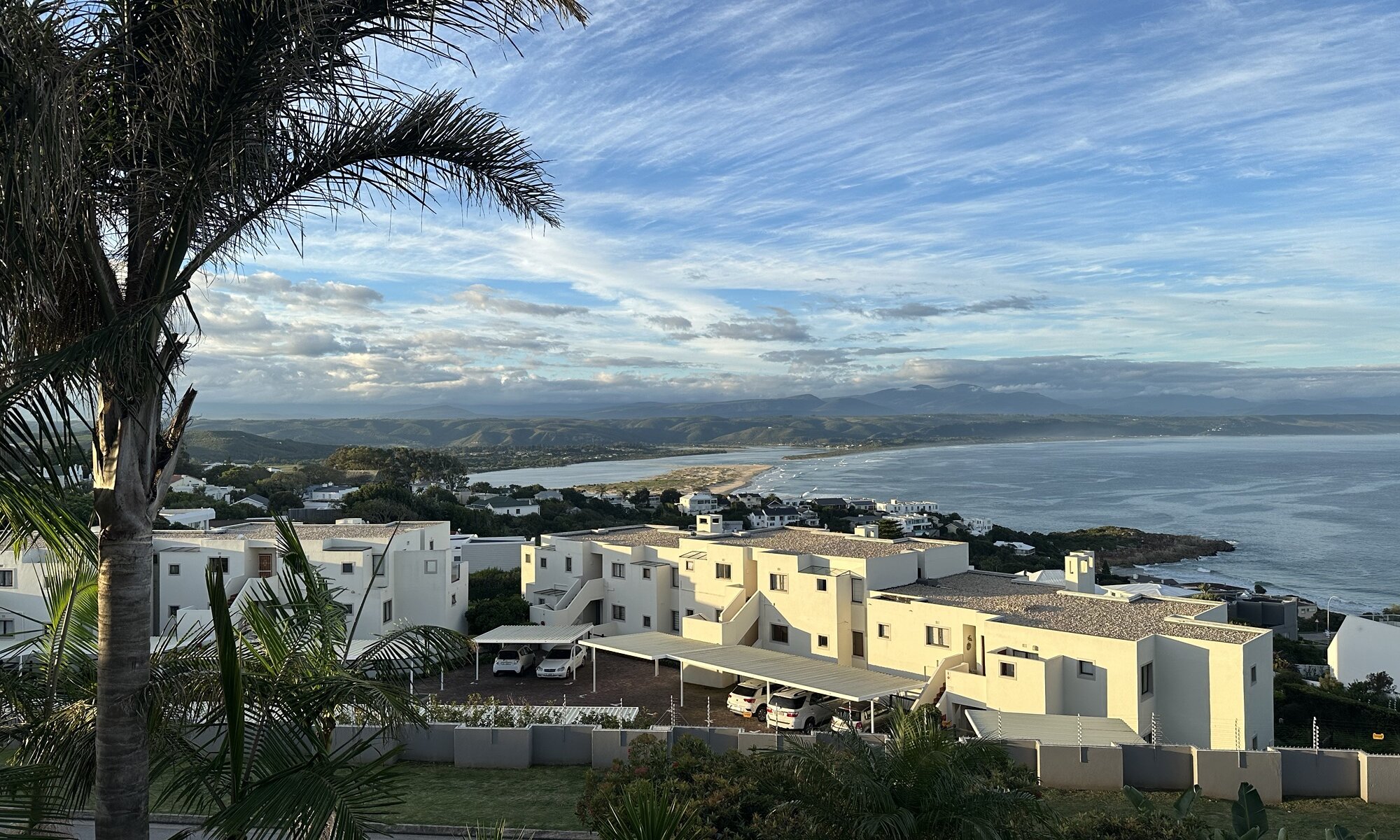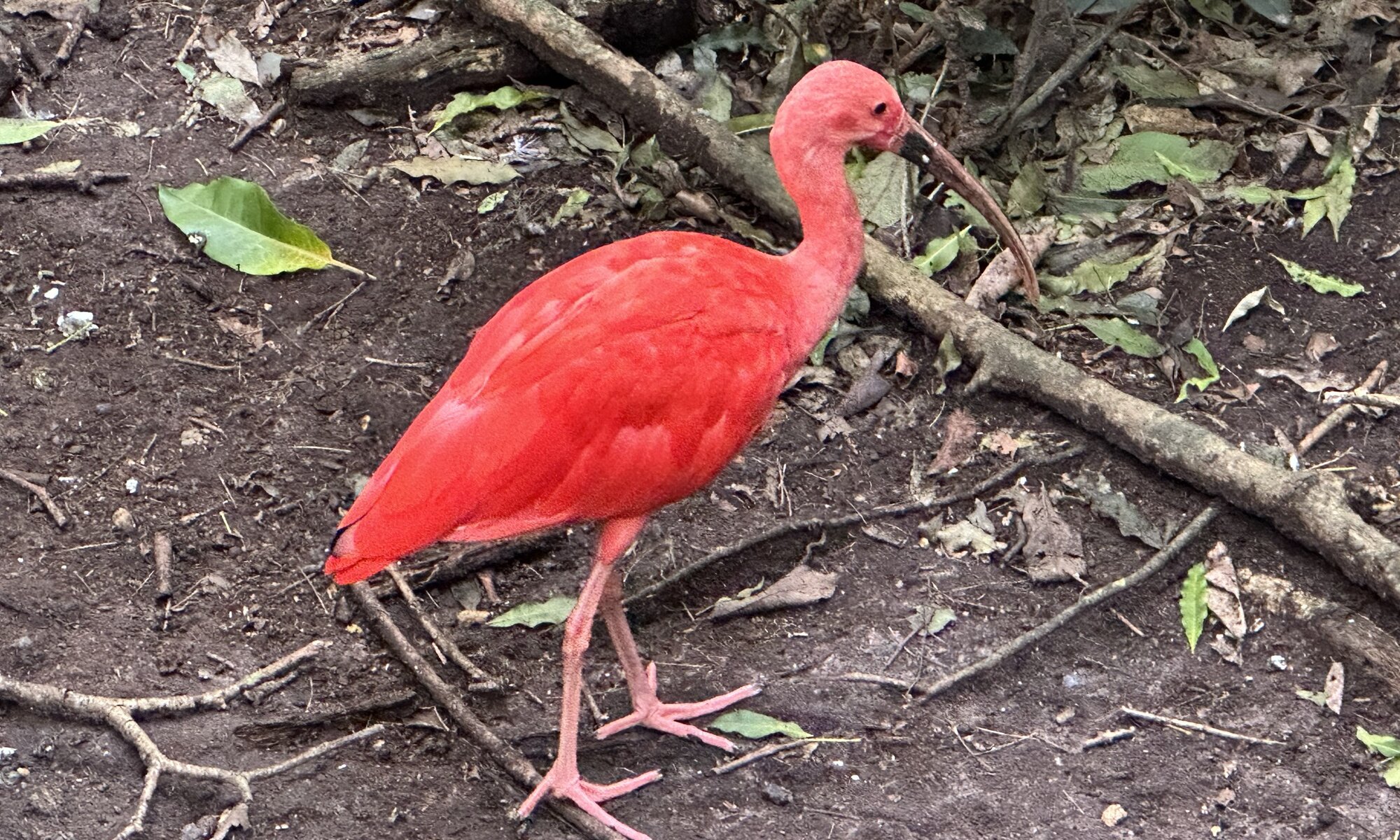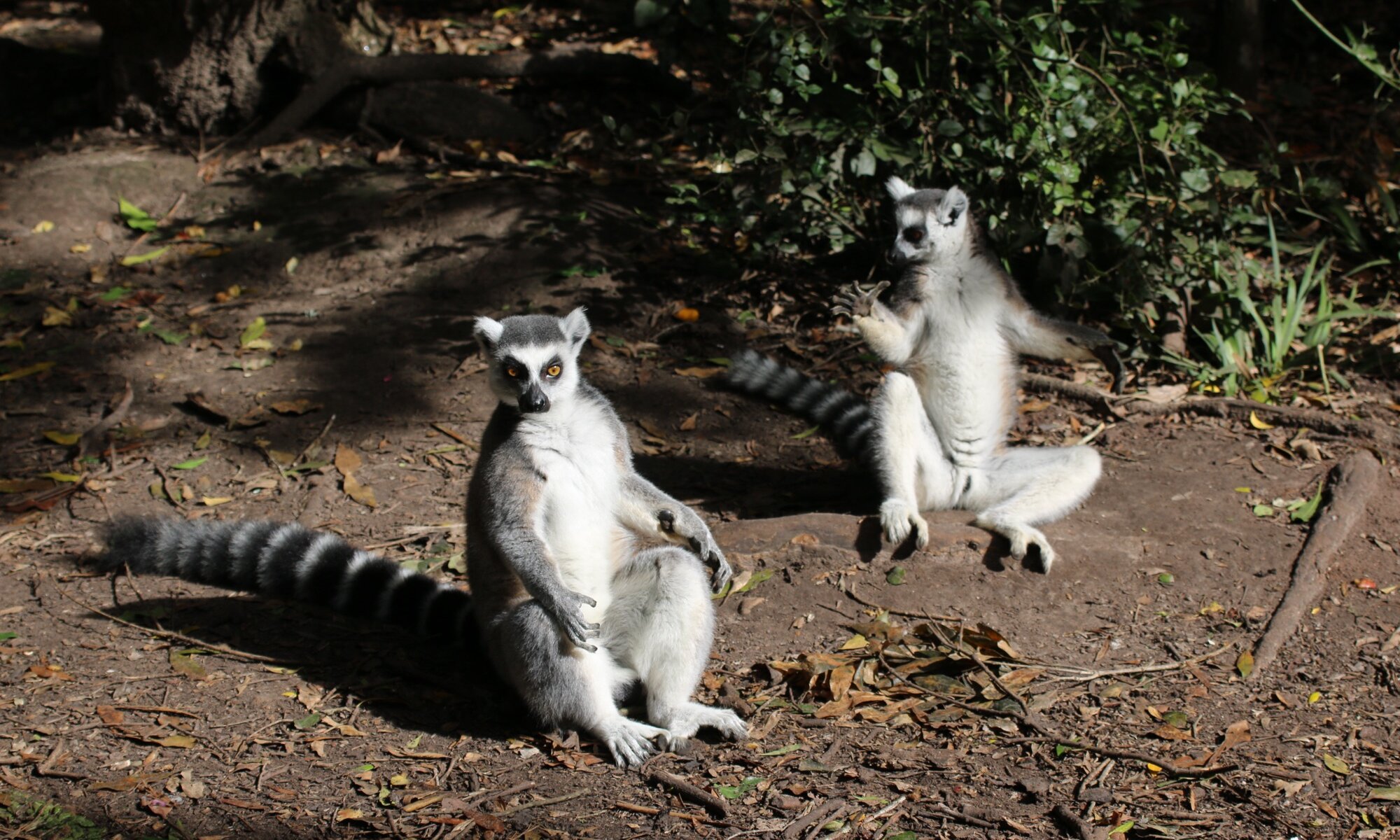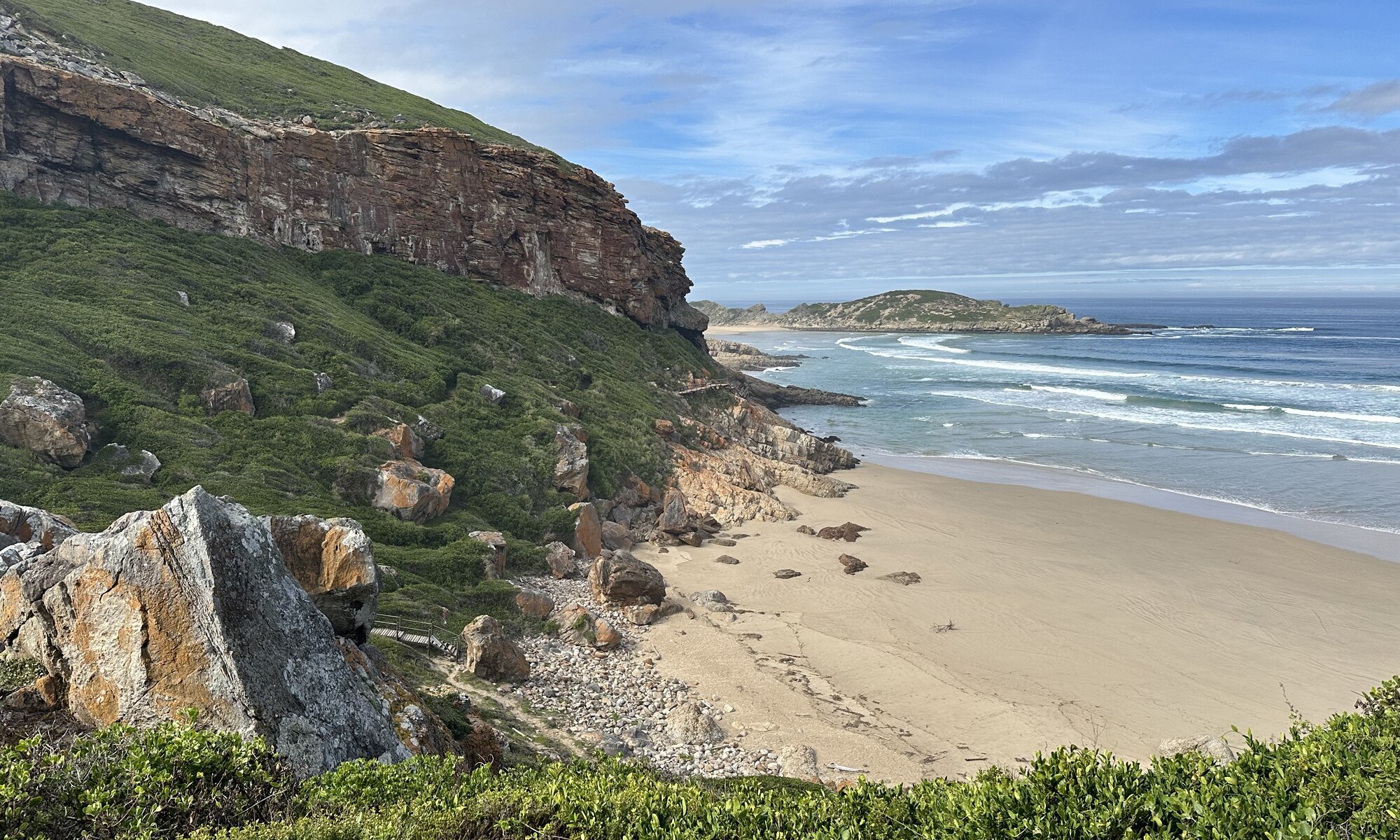Marilyn’s 60’s Diner in Storms River is a nostalgic, vibrant eatery that takes visitors back in time to the 1960s with its retro décor, classic diner menu, and welcoming atmosphere. Styled like an American diner from the mid-20th century, the diner is filled with vintage memorabilia, including old jukeboxes, neon signs, a Cadillac, motorbikes and checkered floors, creating a fun, lively setting. It feels like a small history museum.
Continue reading “The Sixties”At the woods
Having booked the At the Woods Guesthouse at Storms River brings you to a very special place, a village surrounded by forests of the Tsitsikamma National Park. Clearly designed for tourists, but having its special atmosphere. The At the Woods is a simple but good guesthouse with very nice owners. The rooms have a balcony or access to a terrace, but you need to make sure to hide your food as sometimes baboons get there – which sounds more funny than it is.
Continue reading “At the woods”Tsitsikamma
Tsitsikamma National Park is renowned for its stunning coastal beauty, lush forests, and rich biodiversity. The park is part of the Garden Route National Park and spans across rugged cliffs, dense indigenous forests, and tranquil beaches, providing visitors with a variety of outdoor experiences. A highlight of the park is the famous Storms River Mouth, where the Storms River meets the Indian Ocean, creating dramatic landscapes that are perfect for photography, hiking, and kayaking. The park is home to an array of flora and fauna, including monkeys, birds, and vibrant plant life, and offers a wealth of trail systems that lead through ancient forests and along the spectacular coastline.
Continue reading “Tsitsikamma”Freedom Day
Celebrated on April 27th each year, Freedom Day marks the historic day in 1994 when South Africa held its first democratic elections, which were open to all citizens, regardless of race. This day symbolizes the end of decades of Apartheid rule, a system of institutionalized racial segregation and discrimination that had deeply divided the nation. The elections on Freedom Day were a turning point in South Africa’s history, leading to the election of Nelson Mandela as the country’s first Black president.
Continue reading “Freedom Day”Herd
If you want to feed an elephant and want to accompany one on a walk you’ll get your chance at the Knysna Elephant Sanctuary. You can buy some fruits and vegetables (for 50 Rand) and will then be taken to a herd of five elephants. The sanctuary located near Knysna is a conservation-focused reserve dedicated to the protection and rehabilitation of the African elephant. Set within a lush, forested area, the sanctuary is home to a small herd of rescued elephants, offering them a safe and natural environment where they can roam freely.
Continue reading “Herd”Jukani
Lions roaring in the forest: The Jukani Wildlife Sanctuary, located near Plettenberg Bay in South Africa, is a premier sanctuary dedicated to the care and conservation of big cats and other wildlife. Founded with the goal of providing a safe, natural environment for animals that have been rescued from captivity or unethical conditions, Jukani is home to a variety of predators, including lions, tigers, leopards, and cheetahs, as well as other species like bears and hyenas.
Continue reading “Jukani”Ocean Watch
On a hill above Plettenberg Bay you can find the Ocean Watch Guesthouse and nomen est omen – from its terrace you’ve got amazing views on the beach and can enjoy sunrise as well as sunset. I was even so fortunate that I had this panoramic view from my bed. The guesthouse has just five rooms spread across two levels and a vast amount of shared space: living rooms on both levels and a small pool on the ground level.
Continue reading “Ocean Watch”Largest aviary
Birds of Eden at Plettenberg Bay is one of the world’s largest free-flight aviaries, offering visitors an immersive experience in the heart of South Africa’s Garden Route. Nestled within a lush forest, this sanctuary is home to over 200 species of birds from around the globe, including exotic tropical birds, endemic African species, and rare, endangered birds like the Victoria Crowned Pigeon and the African Grey Parrot. The aviary covers a vast area, allowing the birds to fly freely, interact with each other, and display their natural behaviors.
Continue reading “Largest aviary”Neozoa
Monkeyland, located near Plettenberg Bay, is a nice sanctuary dedicated to the rescue and rehabilitation of primates. Set in a lush forest environment, Monkeyland provides a safe haven for over 500 primates from around the world, including species such as capuchins, lemurs, baboons, and marmosets. The sanctuary is a free-roaming facility, allowing the monkeys to live in natural habitats where they can interact with each other and explore the forest at their own pace. Observing monkeys moving from tree to tree is a great pleasure.
Continue reading “Neozoa”Robberg
The Robberg Nature Reserve, located just outside Plettenberg Bay along South Africa’s stunning Garden Route, is a remarkable coastal sanctuary known for its breathtaking scenery and diverse wildlife. The reserve is famous for its rugged cliffs, rocky outcrops, and pristine beaches, making it a popular destination for hikers, nature lovers, and photographers. The Robberg Peninsula, which forms the heart of the reserve, offers a variety of trails with varying levels of difficulty, all providing sweeping views of the Indian Ocean and the surrounding coastline.
Continue reading “Robberg”